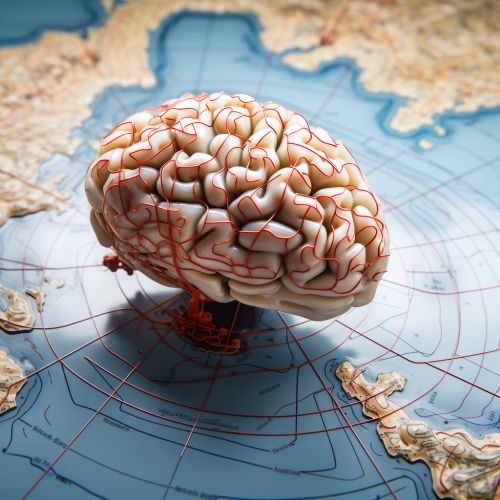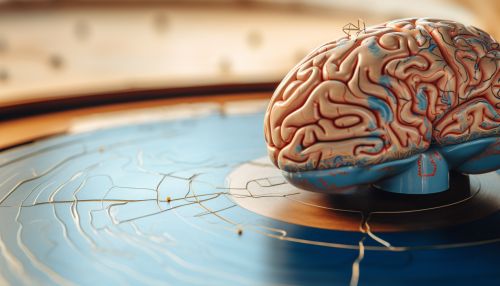Neuroscience of Navigation
Introduction
The neuroscience of navigation refers to the scientific study of the neural mechanisms that humans and animals use to navigate through their environment. This field combines aspects of psychology, biology, and neurology to understand how the brain processes spatial information and uses it to guide movement and behavior.


Spatial Representation in the Brain
One of the key aspects of navigation is the ability to form and use cognitive maps. These are mental representations of the spatial layout of the environment, and they are thought to be stored in the hippocampus, a region of the brain involved in memory and spatial navigation.
Research in both humans and animals has shown that specific cells within the hippocampus, known as place cells, become active when an individual is in a particular location in the environment. These cells are thought to form a kind of neural map of the environment, allowing the individual to navigate effectively.
In addition to place cells, other types of cells in the hippocampus and surrounding regions are also involved in spatial navigation. These include grid cells, which fire in a grid-like pattern across the environment, and head direction cells, which fire based on the direction the individual is facing.
Neural Mechanisms of Path Integration
Path integration is another important aspect of navigation. This involves keeping track of one's position in the environment by integrating information about direction and distance traveled. This process is thought to involve a number of different brain regions, including the entorhinal cortex, which is closely connected to the hippocampus.
Research has shown that grid cells in the entorhinal cortex are involved in path integration. These cells fire in a hexagonal grid pattern and are thought to provide a metric for spatial navigation, allowing the individual to keep track of their position even in the absence of external landmarks.
Role of the Parietal Cortex
The parietal cortex is another brain region that plays a key role in navigation. This region is involved in processing spatial information and is thought to be involved in a number of different aspects of navigation, including route planning and decision-making.
Research has shown that neurons in the parietal cortex become active during navigation, particularly when an individual is planning a route or making a decision about which way to go. This suggests that the parietal cortex is involved in the cognitive processes that underlie navigation.
Navigation is closely linked to memory, particularly spatial memory. This is the ability to remember the location of objects and places in the environment. Research has shown that the hippocampus, which is involved in both navigation and memory, plays a key role in spatial memory.
In addition to the hippocampus, other brain regions are also involved in spatial memory. These include the prefrontal cortex, which is involved in working memory and decision-making, and the cerebellum, which is involved in motor control and coordination.
Conclusion
The neuroscience of navigation is a complex and fascinating field that combines aspects of psychology, biology, and neurology. By studying the neural mechanisms that underlie navigation, researchers can gain insights into how the brain processes spatial information and uses it to guide movement and behavior. This research has important implications for our understanding of a range of neurological and psychiatric disorders, including Alzheimer's disease and schizophrenia, which are often associated with impairments in spatial navigation and memory.
